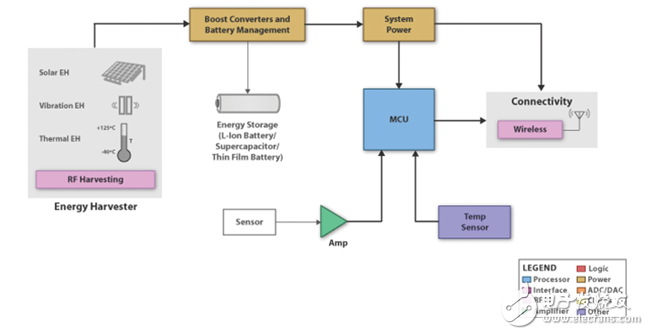
资料下载

用于能量收集的物联网节点的超低功耗智能和功率管理设备
用于能量收集的物联网节点的超低功耗智能和功率管理设备
“物联网”的精确定义(物联网)各不相同。一些人把它看作是现有机器向机器(M2M)市场的逻辑延伸,通过互联网实现远程控制和监控。有些人把这个术语称为拥抱M2M和更多,涵盖了网络对象的更广泛的概念,无论是通过互联网或封闭网络通信。然而,定义的演变,物联网的概念预计将扩散数以百万计,甚至数十亿嵌入式设备和传感器的连接。
物联网预计将刺激增长,在远程监控市场,如环境监测,交通监测在智能城市,结构传感和工业监测从工厂到农场。日益复杂的技术使我们能够安装新的,或加强现有的,无线传感器节点容易和便宜,与另外的传感器,射频设备和一些情报。
许多物联网的最终节点将是以前无关的对象,现在能够提供少量的数据定期,也许是罕见的基础。改进的访问,通过互联网,这种更频繁,变化和众多的传感器数据,将提供更好的洞察系统和网络状态,提高决策,从而提高我们的生活和节约资源。

Ultra-low-power operation is vital in many of these remote monitoring-type sensor nodes, especially as more intelligence and networking capability is added. These nodes need to be maintenance free, and operate continuously, accurately and reliably for long periods of time. Many will have to rely on energy harvesting and/or long-life batteries for power. They also need to be able to switch to ultra-low-power or hibernation states between data transmissions.
Extremely-low-power, yet smarter, microcontrollers are continuing to evolve to meet these requirements together with networked radio communications devices. Power management circuitry is the third essential element. See Figure 1 below.
声明:本文内容及配图由入驻作者撰写或者入驻合作网站授权转载。文章观点仅代表作者本人,不代表电子发烧友网立场。文章及其配图仅供工程师学习之用,如有内容侵权或者其他违规问题,请联系本站处理。 举报投诉
- 相关下载
- 相关文章





